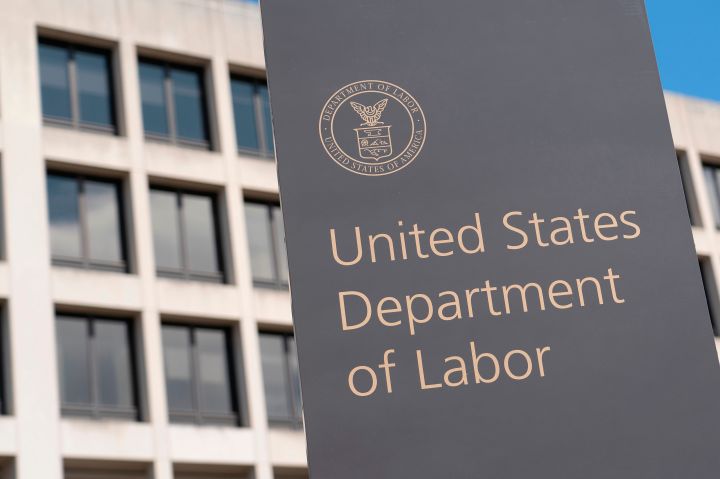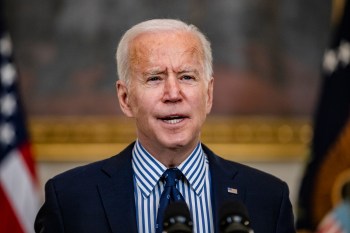
When does the expanded COVID-19 unemployment insurance run out?

This story was originally published on May 7, 2020.
Update June 5, 2020: The U.S. unemployment rate for May showed an unexpected improvement, in what’s being seen as a sign that the downtown due to the coronavirus may be easing. The labor department’s figures show employers are bringing back workers, and the unemployment rate fell to 13.3%, down from 14.7% in April.
However the high number of unemployment claims show that vast numbers of people are still experiencing economic hardship.
There were also 623,000 new claims for federal aid that the government made available to self-employed people, and other workers who wouldn’t normally qualify for the existing state programs.
The federal government has not changed or extended the unemployment benefits it created under the CARES Act in response to the COVID-19 lockdowns, in the same way that it has for other programs like small business loans, so the extra $600 in weekly benefits is currently still set to expire at the end of July 2020.
“The good news is the country may have turned the corner in the coronavirus pandemic, but the bad news is economic growth is going to just limp along if it has to carry millions and millions of jobless workers who cannot support themselves and are running out of benefits to pay the bills,” Chris Rupkey, chief economist at MUFG in New York, told Reuters.
The original story is below.
Tens of millions of people are out of work and filing for unemployment benefits because of COVID-19 — numbers that smash previous records. The CARES Act, passed by Congress and signed by President Donald Trump in March, authorized extra unemployment payments, increasing the amount of money, and broadening who qualifies. (The same bill also included a one-time $1,200 payment for many Americans. You can find more details on that here.)
The increased unemployment benefits have an expiration date — an extra $600 per week the act authorized ends on July 31. The expanded eligibility, to cover gig workers and self-employed people, runs until the end of the year. Figuring out what you are eligible for can be complicated, and depends on the state where you live.
There are three important questions: Who qualifies? How much money do benefits provide? And for how many weeks?
The amount paid varies, but is normally around half the worker’s previous earnings, with a cap. The national average was $371.88 per week at the end of 2019.
The most obvious new benefit to people applying for unemployment payments post-coronavirus is an extra $600 per week. That’s federally funded, and is paid as a flat rate to all claimants who qualify for any level of state benefit. That boost runs out at the end of July, no matter when someone started claiming, unless further funding is approved.
From August onward, unemployment payments fall back to the levels states pay. Experts say the first place to check for advice is your state’s unemployment website. You should be able to find details of the available benefits there, and sometimes apply online.
How long payments last also varies. “People can end up with a very different number of weeks in different states” said Chad Stone, chief economist at the Center on Budget and Policy Priorities.
In normal, non-coronavirus, times, benefits in Florida and North Carolina, for example, last 12 weeks. In California and Virginia, it’s 26 weeks. The Center on Budget and Policy Priorities has an interactive map of benefits by state.
The new provisions mean benefits will last a lot longer. Almost everyone will get at least 39 weeks, or coverage until the end of the year, whichever comes first.
But again, figuring out exactly how that applies varies by state. There are a few abbreviations you’re going to want to get familiar with, to help navigate the system, so we may as well get them out of the way here.
The baseline is the state unemployment insurance (UI) benefit level. When unemployment is high, an existing Extended Benefits (EB) program kicks in to add 13 to 20 weeks of extra payments. The CARES Act adds 13 weeks of Pandemic Unemployment Compensation (PEUC), and it also created Pandemic Unemployment Assistance (PUA).
PUA applies to the third question: who qualifies? It covers people who wouldn’t normally be given benefits, like gig workers (think Uber and Lyft drivers, who are having a hard time right now) as well as freelancers and the self-employed. It also covers people who can’t work for pandemic related reasons, such as they or a family member are sick.
“A long running complaint among UI advocates about the regular state qualifications is that they’re outdated in terms of eligibility,” Stone said.
The concept of unemployment payments in the U.S. dates back to 1935, and was defined around, usually, a man being temporarily between conventional jobs, he said. The real picture today is very different, and people of color, low wage earners, and women, are more likely to have work histories which may not pass the traditional test to qualify for benefits. The CARES Act updates the categories of workers who qualify, to include gig workers and freelancers, but only temporarily.
A further difficulty for anyone trying to apply for benefits is simply that they’re one of millions. State unemployment offices, which deal with the administration for these benefits, are overwhelmed by the deluge of new applications. (One unemployment claims processor in New York State, Helen Esposito, recently told Marketplace that it’s worse than the spikes from 9/11, the Great Recession, and Hurricane Sandy, added together, and multiplied by 3.)
“What that means is that people are unable to get through, and get the basic information,” said Angela Cornell, a law professor at Cornell.
“Many people who should be entitled to these funds, and should have money in their hand right now, don’t have it.”
Even the expanded benefits don’t cover everyone. Our Marketplace-Edison Research Poll shows nearly half of people who are out of work haven’t applied for unemployment. As bad as the unemployment numbers look now, they could be even higher.
There’s a lot happening in the world. Through it all, Marketplace is here for you.
You rely on Marketplace to break down the world’s events and tell you how it affects you in a fact-based, approachable way. We rely on your financial support to keep making that possible.
Your donation today powers the independent journalism that you rely on. For just $5/month, you can help sustain Marketplace so we can keep reporting on the things that matter to you.


















